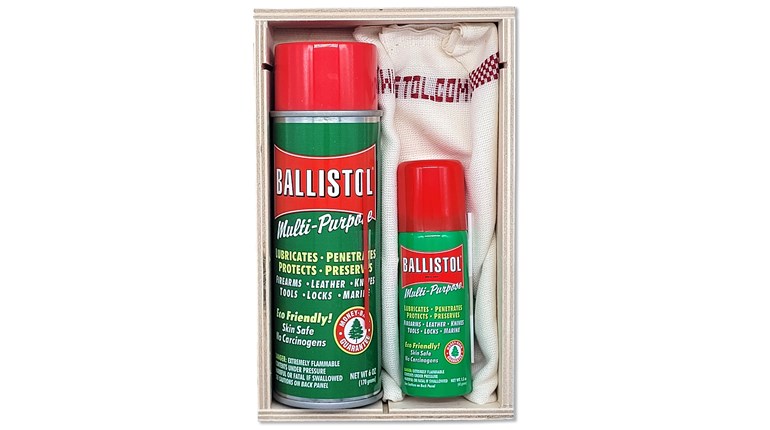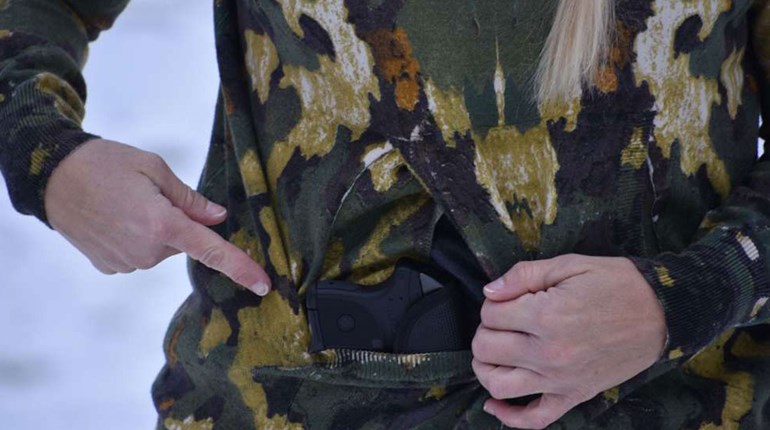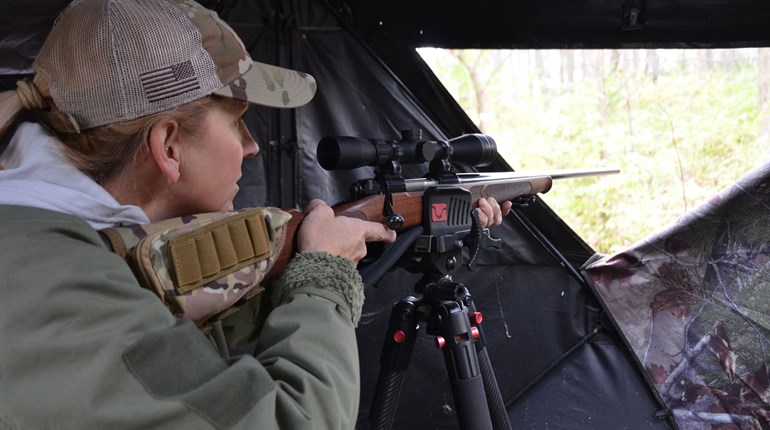
Mastering basic firearms maintenance is a worthy goal for all gun owners. You should know the basic functions of your firearm and take the time to learn about what is required to keep it in good working order. Determining whether your gun needs oil or needs to be cleaned is pretty simple. Here’s how you can tell when you need to clean versus just applying oil.
Before you Begin …
As always, any cleaning or maintenance on firearms starts with obeying the rules of firearm safety and ensuring that your gun is unloaded and the chamber is clear. Never bring ammunition into the area where you are cleaning firearms.
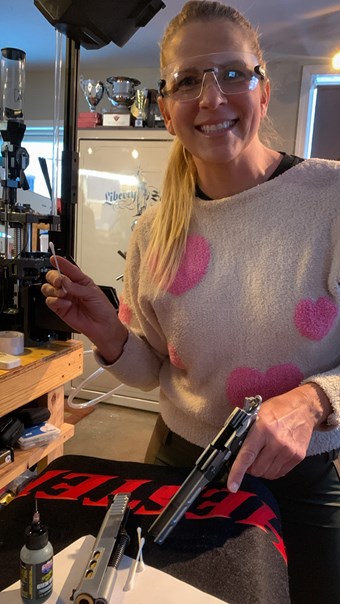
Just Add Oil
“Just add oil” is the mantra that many gun owners embrace, after all, it’s easier than learning how to tear down and reassemble your firearm. It is also a recipe for potential problems in the future. True, it generally cannot hurt to add oil to your firearm. But just adding oil and not understanding if it’s necessary is a waste of oil.
The reason that many advocate “just add oil” is because the one thing you’re going to have to do to maintain your firearm is oil it! Guns are machines; they don’t run properly without oil. So the standby of “add oil” in some ways goes back to the people who refuse to invest time into working with their firearms. Adding oil is better than doing nothing. If you are the sort of person to do NOTHING to maintain your firearms, you’d better at least oil it. But do not go overboard by adding too much oil.
Carbon
Carbon is the byproduct of shooting a gun. When you fire a round, you’re creating a small explosion. There’s powder burning under pressure, burning gas, and the heat it creates. All of it leads to carbon.
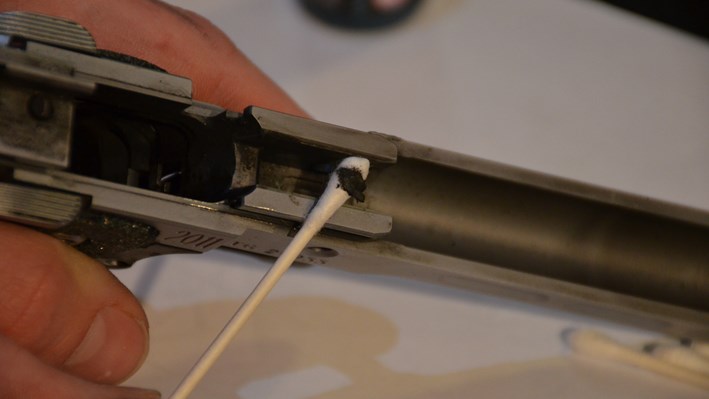
Carbon sticks to certain parts of your gun. You have to accept that carbon will collect, but you don’t want it building up so heavily that it impedes the function of the firearm. There can also be unburned powder, as well as oil that’s mixed with carbon, grease, and dust and dirt (especially if you are shooting outdoors in a dusty environment).
Some parts of a pistol that you should watch for carbon build-up are:
Extractor. This is a common place for build-up of carbon. If the extractor becomes caked with carbon and the channel it rides in is filled with carbon, it can fail to work properly.
Surfaces of your pistol slide or frame. If you allow carbon to build where you slide moves over the frame, this can slow the cycling of your firearm down. It will also cause your firearm to wear and prematurely shorten the life of your firearm by increasing the tolerances past what they were manufactured to be. (This means the space between moving parts of the gun gets filled with carbon/oil/sludge and the parts wear. They wear because they were made a specific size and to work with a coating of oil—not a layer of sludge between them.)

Firing pin channel. Ensure it’s clean and dry. Striker-fired pistols can build up carbon in this channel with thousands of rounds. If you shoot many thousands of rounds or purchased a used firearm, it’s something to look at. Glock actually makes a special set of scraping tools for its pistols specifically for this purpose.
Carbon can build up and push parts or springs out of their intended position. Carbon build-up can prevent springs from compressing or detents from working properly. Dirt and carbon can build up and get behind parts of your trigger in various guns. The inevitable build-up is why adding oil isn’t always the right answer. It can just attract the carbon and dirt and gum things up, migrate down into other parts of the gun, or come off onto your optic or glasses when you shoot.
Dry Parts vs Wet Parts
Carbon will usually not build up on dry parts, but like any airborne particulate, if it’s blown into something wet, like grease or oil, it will stick. Carbon can deposit in a muzzle brake into a form so hard that it requires mechanical removal (punch and a hammer). Carbon is often best removed by just wiping it off—provided you clean frequently enough.
To make carbon easier to wipe off, think of oiling your gun like you would seasoning a cast-iron frying pan. If you fill the pores of the metal with oil, they cannot trap things you don’t want in them. We don’t actually “season” firearms, but some metal treatments are akin to “seasoning” treatments like black nitride. These treatments penetrate and change the structure in the top layer of the metal. It’s not a coating, but changes the metal chemically to make it less porous and help protect the metal.
Many firearms do not have these more costly treatments, and we rely on oil. Oil works similarly in that it can fill the pores of metal, but it’s not permanent, it doesn’t change the metal and it burns off easily. So reapplying oil—adding oil, is necessary.

An example of a part in your firearm that can benefit from consistent cleaning and not being soaking wet with oil is the slide. The “shiny parts” where the slide moves against/over the rails of the frame—those should have a light coating of oil. When carbon builds up and sticks to those areas, it can slow the slide down as it moves over the frame during recoil. It’s simpler to wipe these surfaces off every few hundred rounds and re-apply a light coating of oil than it is to let it build for thousands of rounds and have to scrub it off. If you apply too much oil, it will make racking your slide and handling the firearm an oily mess.
All gun cleaning can actually be looked at as less about cleaning and more about maintaining— a frequent wiping off and re-oiling to maintain the right level of oil means less build-up to scrub off later. Easy. Simple. And you don’t even have to entirely disassemble the gun for the most part. Gun cleaning would be less intimidating if it was looked at as maintenance—a quick “wipe-down and re-oil.”
Habitual maintenance would also mean fewer issues from delayed cleaning. Parts would last longer because tolerances are maintained. And if you shoot infrequently and leave your firearm in the safe for months between use, the oil can become hard, or “varnish,” and the parts of the gun can be stuck or difficult to get moving properly. So wiping off carbon and build-up and re-oiling before storage is a good habit that means more enjoyment and less potential for trouble.
Oil-free Zone
One area that most experienced with firearms will tell you never to apply oil is the firing pin. This is because it can attract carbon and dirt that leads to problems. It’s not necessary. Just don’t do it. Will it hurt if you did? Any oil on your firing pin or in the channel it moves in will likely just lead to potential problems more than anything. And the firing pin hole is so small that not much carbon is going to get in there.
Back to the Oil
Guns that need a wipe-down and re-oil are the casually fired guns—the ones we plink with for 50-200 rounds and put away. If we wipe down and re-oil firearms as we use them, the only time we have to truly worry about deep-cleaning them is if we were, say, going on an important hunt, or going to a competition … or maybe once every year or two as part of home preparedness and just being familiar with your firearm.
Guns that need a heavy cleaning where we strip the parts to bare metal and remove all oil or grease are high-use guns (many thousands of rounds). Part of why we want to strip them to bare metal once in a while is to inspect the parts carefully to make sure they are all in good working order (that no cracks have developed in a slide, that the guide rod looks good, that our extractor can still move freely, parts have not worn, etc..)
Failing to clean your firearm is going to shorten the life of the gun. But deep cleaning is only a once or twice a year thing, even for heavily used firearms. Frequent removal of any carbon and dirt build-up followed by re-applying a light coat of oil is the easiest way to ensure your firearms function when you need them. But if you don’t have time, don’t have the know-how, and want to make sure that the guns you put back into the safe are not going to rust … just add oil.












